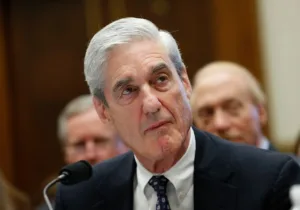Ever since President Donald Trump withdrew the United States from the Trans-Pacific Partnership (TPP) in 2017, Washington has been engulfed in a contentious debate whether leaving the treaty was a geo-economic blunder or a necessary step to protect the American economy. Notwithstanding the benefits and pitfalls, TPP offered a viable alternative to China’s signature Belt and Road Initiative (BRI). While the US has taken bold measures to counter Beijing militarily, Washington still lacks a strategy that would offset China’s economic ambitions to advance Beijing’s geopolitical interests.
True, BRI may be overhyped and inherently risk-prone, thereby casting skepticism over the long-term sustainability of China’s foreign infrastructure projects. However, with no concrete American geo-economic regional policy, BRI is filling the space that Washington ceded following its withdrawal from TPP. In contrast, Beijing showcased its determination by incorporating BRI as a foreign policy objective into the Communist Party’s Constitution in 2017, making its relinquishment essentially illegal.
Furthermore, after years of meticulous negotiations China finalized the Regional Comprehensive Economic Partnership (RCEP), a major trade deal involving 15 Asia-Pacific nations in November of 2020. To wrap up the year, Beijing cajoled the European Union into signing the Comprehensive Agreement on Investment in December of 2020, promising a greater access to the vast Chinese market. It remains to be seen whether these trade deals will live up to their full potential, but they surely display China’s growing global footprint.
Now that America is on an offensive to expose Beijing’s destabilizing behavior and its implications for regional security, Washington should not overlook the significance of free-trade agreements in Asia. By connecting mostly free-market economies in the region, TPP would become a bulwark against China’s commercial empire while creating a linkage between Washington’s military presence and the regional economic integration.
More fundamentally, rejoining TPP (which the other signatories turned into the Comprehensive and Progressive Agreement for Trans-Pacific Partnership, or CPTPP or TPP-11, after the US withdrew) would strengthen America’s strategy of promoting a rules-based order in the Indo-Pacific and enhance its profile as a Pacific nation. Though the US has been involved in Asia since the early days of the Republic, the institutionalized American presence is largely the legacy of World War II and the subsequent creation of the regional hub-and-spoke system as well as the land wars America fought in Asia.
Additionally, TPP would cement the US-Japan security nexus that upholds the aforementioned order. Even though this concept was first articulated by Dutch-American political scientist Nicolas Spykman in the immediate aftermath of World War II, prominent figures including Commodore Matthew Perry and Captain Alfred Mahan envisioned America’s Asian strategy based on vibrant commerce, potent navy, and stabilizing alignment with Japan long before Spykman proposed his thesis. This vision was ultimately realized, and Japan has been America’s backbone in Asia ever since.
The American withdrawal from TPP was a major blow to Tokyo. Then-Prime Minister Shinzo Abe, a loyal Washington ally, accepted significant domestic risks to enlist Japan in TPP. Unlike other allies, Japan profoundly refused to join the China-led Asian Infrastructure Investment Bank (AIIB) and continued advocating for TPP. Furthermore, Abe went against powerful groups, including agricultural, healthcare, and service industry lobbyists, to liberalize Japan’s economy per the agreement’s provisions. Had the US ratified TPP, Washington and Tokyo would gain much leverage within this overarching trade agreement due to the sheer size of their economies.
More recently, the accelerating force of the coronavirus pandemic has intensified the talks of the great Sino-American decoupling. If anything, the pandemic has demonstrated that overreliance on a single supplier could be a fatal mistake. While it would be a herculean task to fully detach America from China, TPP would allow the US to shift some of its production to countries like Vietnam and Malaysia, at least partially.
Apart from teaching the US a tough lesson, the coronavirus also exposed the often exaggerated subtlety of Chinese strategy, therefore gifting Washington an opportunity to up its game in the Indo-Pacific. For instance, Beijing’s needless clash with India along the Himalayan border; sending of an aircraft carrier to intimidate Japan; and imposing economic sanctions on Australia during the virus’ peak accomplished nothing. But it mobilized regional powers against China.
Virtually all states in the Indo-Pacific consider China’s maritime claims unlawful and have unresolved territorial disputes with Beijing. Restrained by their economic dependence on China and concerned over the latter’s reckless military swaggering, these nations would be more than receptive to some type of an American-led geo-economic vision.
Granted, TPP was not perfect, and some of its provisions and obligations did not sit well with policymakers who had the power to derail America’s participation. For example, several of TPP’s signatories had a gross record of currency manipulation that lowered the cost of American imports and hiked the cost of exports. This made a good explanation for America’s staggering trade deficits, and TPP had no enforcing mechanisms to prevent the manipulations.
In fact, then-Senate Majority Leader Harry Reid, known for his anti-free-trade stance, opposed TPP right off the bat. President Barack Obama, too, was not overly enthusiastic about TPP due to the post-2008 financial crisis recovery and his unwillingness to confront the anti-TPP opposition within the Democratic Party. Nevertheless, Obama eventually subscribed to the trade agreement and acknowledged that China would fill the vacuum had the US abdicated.
There is nothing wrong with renegotiating trade deals, which Donald Trump did multiple times during his presidency. But as Robert D. Kaplan argues, while “seeking better trade deals” is a natural process, to “spiritually question the logic of free trade” inevitably “undermines American powerdom.”
A challenging topic it might be, but President Joe Biden will need to establish an economic framework for the Indo-Pacific, a region that will dominate America’s strategic thinking in the decades to come and that Christian realists must understand because of how it will shape the world. The US should reform and rejoin TPP.






 Sponsor a student for Christianity & National Security 2024
Sponsor a student for Christianity & National Security 2024